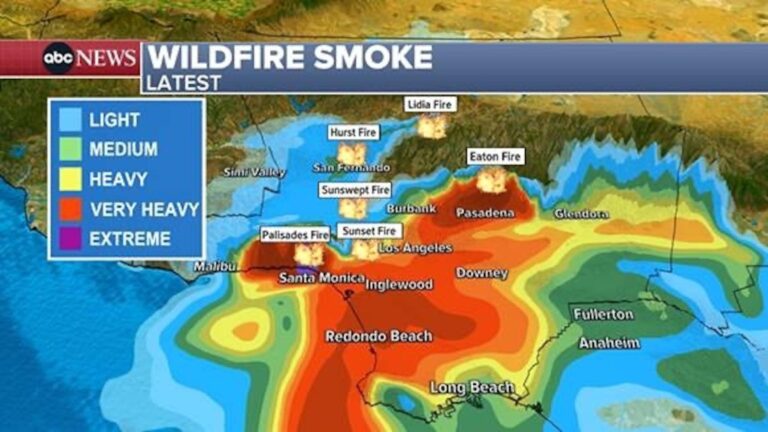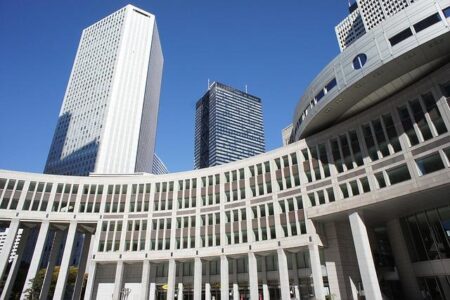Los Angeles Wildfires Trigger Unprecedented Economic and Insurance Challenges
Soaring Wildfire Damages Threaten Southern California’s Economic Stability
The recent wave of destructive wildfires across Los Angeles has caused a dramatic escalation in estimated financial losses, now reaching an extraordinary $150 billion. This figure represents a threefold increase from earlier projections and highlights the extensive devastation inflicted on thousands of homes, businesses, and critical infrastructure. Beyond the immediate physical damage, this surge exposes meaningful vulnerabilities within California’s insurance framework, which is struggling to adapt to the scale and frequency of these disasters. Economists and industry experts warn that this growing crisis could destabilize the regional economy as insurers revise risk assessments and sharply increase premiums,placing homeowners and commercial enterprises under severe financial strain.
Several interrelated factors are intensifying the crisis:
- Extensive property destruction with entire neighborhoods declared total loss zones
- Massive influx of insurance claims overwhelming carrier capacities
- Rising reconstruction expenses fueled by labor shortages and soaring material costs
- Regulatory bottlenecks delaying claim approvals and payouts
These challenges have sparked urgent calls for comprehensive policy reforms aimed at enhancing wildfire mitigation efforts and establishing innovative financial protections to safeguard homeowners and the broader economy.
| Metric | Pre-Wildfire | Current Estimate |
|---|---|---|
| Damage Costs | $50 Billion | $150 Billion |
| Insurance Claims Filed | 100,000 | 320,000 |
| Average Premium Increase | 5% | 25% |
Insurance Sector Faces Unprecedented Strain Amid Rising Climate Threats
The insurance industry in California is grappling with an overwhelming surge in claims as wildfires grow more frequent and severe due to climate change. The latest damage projections, now at $150 billion, have forced insurers to overhaul their risk evaluation models and confront significant underwriting challenges. Many companies are retreating from high-risk wildfire zones, resulting in a scarcity of coverage options and soaring insurance costs for both homeowners and businesses.
The insurance ecosystem is further stressed by several critical issues:
- Rapidly increasing claims volume that strains processing and payout systems
- Depleting financial reserves threatening insurer solvency
- Rising policy cancellations leaving large areas uninsured
- Heightened regulatory scrutiny demanding enhanced consumer protections
To illustrate the escalating financial burden, consider the wildfire damage and claims data from recent years:
| Year | Estimated Fire Damage (Billion $) | Claims Filed (Millions) |
|---|---|---|
| 2021 | 45 | 0.8 |
| 2022 | 62 | 1.2 |
| 2023 | 150 | 2.5 |
Urgent Calls for Policy Overhaul to Protect Homeowners and Stabilize Insurance Market
In response to the escalating wildfire damages and the resulting insurance turmoil, California policymakers are advocating for immediate and comprehensive reforms to stabilize the homeowner insurance market. With damage estimates now tripling to an unprecedented $150 billion,the need for decisive action has become critical. These reforms are designed to strengthen insurer solvency while ensuring that homeowners retain access to affordable coverage amid growing wildfire risks.
Proposed strategies under consideration include:
- Enforcement of enhanced risk reduction measures such as stricter defensible space requirements and mandatory wildfire-resistant construction standards.
- Implementation of state-supported reinsurance programs to incentivize insurers to maintain coverage in high-risk wildfire areas.
- Creation of a wildfire insurance affordability fund aimed at subsidizing premiums for vulnerable homeowners in the most fire-prone regions.
Experts warn that without swift policy intervention, the ongoing withdrawal of insurers could leave millions of Californians without coverage, exacerbating housing market instability and increasing financial hardship.
| Reform Initiative | Objective | Anticipated Outcome |
|---|---|---|
| Risk Mitigation Enforcement | Minimize wildfire exposure | Reduce claims and enhance community safety |
| State-Backed Reinsurance | Encourage insurer participation | Expand insurance availability |
| Affordability Fund | Lower homeowner premium costs | Protect financially vulnerable households |
Enhancing Wildfire Prevention and Modernizing Risk Models: Expert Recommendations
Given the dramatic rise in wildfire-related losses, experts are urging state leaders to substantially increase funding for wildfire prevention programs. Current allocations are insufficient to address the intensifying threats driven by climate change and expanding urban progress into fire-prone landscapes. Specialists emphasize that investments in advanced early warning systems, strategic vegetation management, and community preparedness initiatives are essential to reduce future fire impacts and associated economic losses.
Furthermore, there is a growing consensus that existing wildfire risk assessment methodologies are outdated and fail to capture the evolving nature of wildfire hazards. Traditional models, which rely heavily on past fire data, underestimate the frequency and intensity of modern wildfires. Experts advocate for integrating dynamic environmental factors—such as prolonged drought conditions, shifting wind patterns, and fuel accumulation—into predictive models. This approach will enable insurers and policymakers to better anticipate risks and allocate resources more effectively.
- Increase wildfire prevention funding by 50% over the next three years
- Incorporate real-time satellite and meteorological data into risk models
- Use improved risk projections to stabilize insurance premiums
| Current Prevention Budget | Recommended Increase | Projected Wildfire Damage |
|---|---|---|
| $3 Billion | + $1.5 Billion | $150 Billion |
Conclusion: Navigating the Intersection of Climate Change, Insurance, and Community Resilience
As wildfire destruction in Los Angeles continues to escalate, with damage estimates now tripling to an unprecedented $150 billion, California stands at a pivotal juncture. The insurance sector is under immense pressure,threatening the financial well-being of millions and the stability of local economies. Addressing this multifaceted crisis requires coordinated efforts among policymakers, insurers, and communities to develop lasting strategies that not only respond to immediate recovery needs but also proactively mitigate long-term wildfire risks. This unfolding insurance emergency highlights the urgent necessity for climate resilience planning in one of the nation’s most vulnerable regions.




